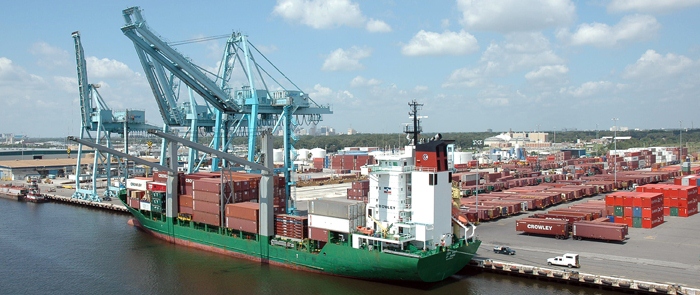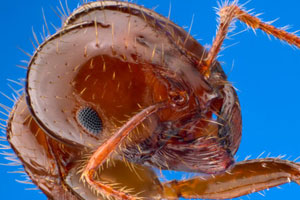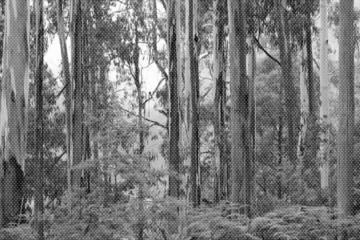International trade contributes to “a prosperous, sustainable Australia providing opportunity for all”, says the Australian Government’s trade policy.[1] Undoubtedly so. But international trade also provides opportunity for invasive organisms, which undermine Australia’s prosperity and sustainability.
There is inherent conflict between free trade and biosecurity, and ISC shares concerns with many farmers that biosecurity policy can be compromised by trade priorities (and not because we’re protectionists in disguise). During the 2008 Beale review of biosecurity, several organisations raised concerns about “potential or perceived conflicts between Australia’s market access objectives and biosecurity decision making”.
High-profile conflicts have erupted about decisions to allow imports of various agricultural products, including apples from New Zealand, bananas from the Philippines, and fresh pork from several countries. The government has been accused of sacrificing “quarantine protection on the altar of free trade”.[2] ISC hasn’t assessed those import decisions, but is concerned that decisions primarily affecting the environment typically receive much less or no public scrutiny and are thus more vulnerable to market-friendly trade-offs.
Australia’s new biosecurity legislation (Biosecurity Bill 2012) is unlikely to increase public confidence because it fails to insulate import decision-making from trade promotion. The very person charged with biosecurity decisions – the Secretary of the Department of Agriculture, Fisheries and Forestry – also has a major role in pursuing export market opportunities.
The fact that most of Australia’s top export destinations are also our main sources of imports provides incentive to relax restrictions to avoid upsetting trading partners.
Trade and invasive species
“Growth in the volume and complexity of international trade, combined with the liberalization of regulatory regimes to encourage trade, has at once increased the frequency of introductions along existing pathways, the number of new pathways, and the ease with which potentially invasive species can move along those pathways.”[4]
Invasive species typically arrive either as imported goods – most weeds were imported nursery or pasture plants and most invasive fish arrived for the pet trade – or as stowaways on products, ships or shipping containers.

Several researchers have demonstrated a correlation between the magnitude of imports and the number of invasive species and their rate of introduction.[5]
Australian imports have surged, their value quintupling over 20 years to $200 billion in 2010, and will continue to grow. International container import volumes are expected to triple from 3.3 million TEUs (Twenty Foot Equivalent Units) in 2010 to 9.1 million in 2030. This means that unless biosecurity is considerably improved, Australia’s invasive species burden will also inevitably grow.
Trade and biosecurity
Australia officially aims to reduce biosecurity risks to “a very low level, but not to zero”. To achieve this, it is important that import decisions are transparent and reviewable, and made by experts who are independent of trade promotion and political influence. The Beale review recommended these decisions become the responsibility of an expert-based Biosecurity Commission within an independent Biosecurity Authority. ISC strongly endorses this model. The Australian Government initially endorsed the recommendations, but then abandoned them.
The Biosecurity Bill 2012 takes the opposite approach. The biosecurity agency is to be part of the Department of Agriculture, Fisheries and Forestry, and all import decisions are to be made by the Departmental Secretary, when wearing the hat of the Director of Biosecurity.
Some import decisions will be guided by Biosecurity Import Risk Analyses, which will be subject to public consultation and will be published, but to date the focus of these analyses has primarily been agricultural rather than environmental priorities. Under the Biosecurity Bill, the Agriculture Minister but not the Environment Minister will be able to direct priorities for these analyses.
Other import decision-making is likely to be opaque – the Bill does not require public consultation on risk assessments or publication. Import decisions are legally reviewable but only for the applicant, not for the public or others affected by decisions.
There has to be a balance between trade and biosecurity. We can only hope to tilt that balance further towards environmental precaution by advocating a thicker wall between import decisions and export promotion.
References
[1] See http://www.dfat.gov.au/publications/trade/trading-our-way-to-more-jobs-and-prosperity.html
[2] The quote is from a former deputy secretary of the Department of Trade, Colin Teese, at http://www.newsweekly.com.au/article.php?id=2034.
[3] Department of Foreign Affairs & Trade. 2011. Composition of Trade Australia 2010-11. Australian Government.
[4] Perrings C, Williamson M, Barbier EB, Delfino D, Dalmazzone S, Shogren J, Simmons P, Watkinson A. 2002. Biological invasion risks and the public good: an economic perspective. Conservation Ecology 6: 1-7.
[5] Dalmazzone S. 2000. Economic factors affecting vulnerability to biological invasions. In: Perrings C, Williamson M, Dalmazzone S. (Eds.) The Economics of Biological Invasions. Edward Elgar Publishing, Cheltenham, UK, pp. 17–30.
Levine JM, D’Antonio CM. 2003. Forecasting biological invasions with increasing international trade. Conservation Biology 17:322–326.
Westphal MI, Browne M, MacKinnon K, Noble I. 2008. The link between international trade and the global distribution of invasive alien species. Biological Invasions 10:391–398.
Hulme PE. 2009. Trade, transport and trouble: Managing invasive species pathways in an era of globalisation. Journal of Applied Ecology 46:10–18.
Dalmazzone S. 2010. Socio-economic drivers of biological invasions. A worldwide, bio-geographical analysis of trade flows and local environmental quality. Working Paper Series.
Lin W, Cheng X, Xu R. 2011. Impact of different economic factors on biological invasions on the global scale. PLoS One. 6(4):e18797.





